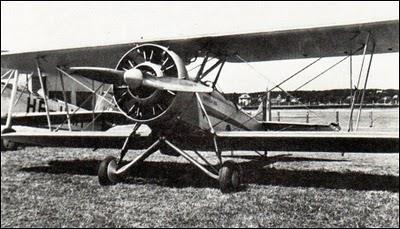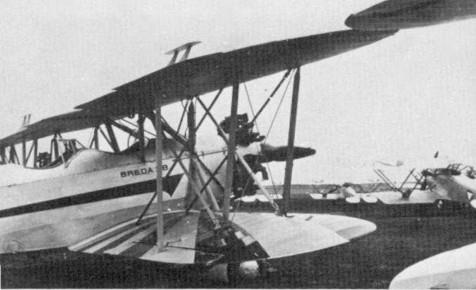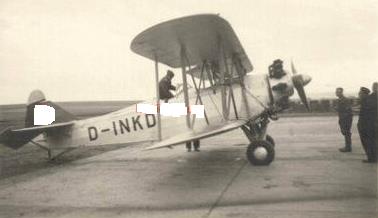Derived from the predecessor Ba.25 in 1930, the Ba 28 differed from this mainly with a more streamlined fuselage and for the presence of the ailerons mounted on both wings instead of just on the bottom. The wings were made of a metal frame covered with painted canvas that were connected on a square-section fuselage. The Ba.28 had an air-cooled radial Piaggio P.VII with Townend ring, capable of developing 380 HP (279 kW), which allowed to reach 240 km / h, maintaining stable cruising speed to 200 km / h.
Only 50 was produced , tweve delivered to Austria. These were taken over by the Luftwaffe after the "Anschluss"
A few were used by the Norwegian Naval Air Force, captured but probably scrapped
Colours: Austrian
Alu overall, red/white stripes on upper wing, red stripe and red Breda 28 on fuselage
| Type |
Two-seat advanced trainer |
| Engine |
1 Piaggio P. VIIZ |
| Dimensions |
Length 8,70 m, height 2,90 m, span 10,00 m, wing area 30 m2 |
| Weights |
Empty , flying weight 1200 kg |
| Performance |
Max. speed 240 km/h, cruising speed 215 km/h, service ceiling 7500 m, range 400 km |
| Type |
Werk.Nr |
Registration |
History |
|
70.061 |
511 |
NSFK Gruppe 17 |
|
70.062 |
512 |
NSFK Gruppe 17 |
|
70.063 |
513 |
NSFK Gruppe 17 |
|
70.060 |
515 |
NSFK Gruppe 17 |
|
70.066 |
516 |
|
|
70.077 |
517 |
Zeugamt in Erding |
|
70.089 |
518 |
NSFK Gruppe 17 |
|
70.091 |
519 |
Zeugamt in Erding |
|
|
70.092 |
520 |
NSFK Gruppe 17 |
|
70.093 |
521 |
NSFK Gruppe 17 |
|
70.094 |
522 |
NSFK Gruppe 17 |
| Registration |
Unit |
| D-IHWF |
NSFK Gruppe 17 |
| D-INKD |
Reichschule für Motorflug in Rangsdorf |
| D-INMD |
|
| D-INMR |
NSFK Gruppe 17 |
| D-IQJG |
NSFK Gruppe 17 |
| D-IQJK |
|
| D-ITQG |
Junkers Flugzeugwerke AG, NSFK |
| D-IVKK |
NSFK Gruppe 17 |
| DK+EH |
Sch/FAR. 14 |
| Norwegian Ba. 28 |
| Registration |
Prod.Nr. |
History |
| F.206 |
27043 |
Captured at the workshop 9/4 1940. |
| F.208 |
27046 |
Captured at the workshop 9/4 1940f |
| F.210 |
27045 |
Captured at the workshop 9/4 1940 |



